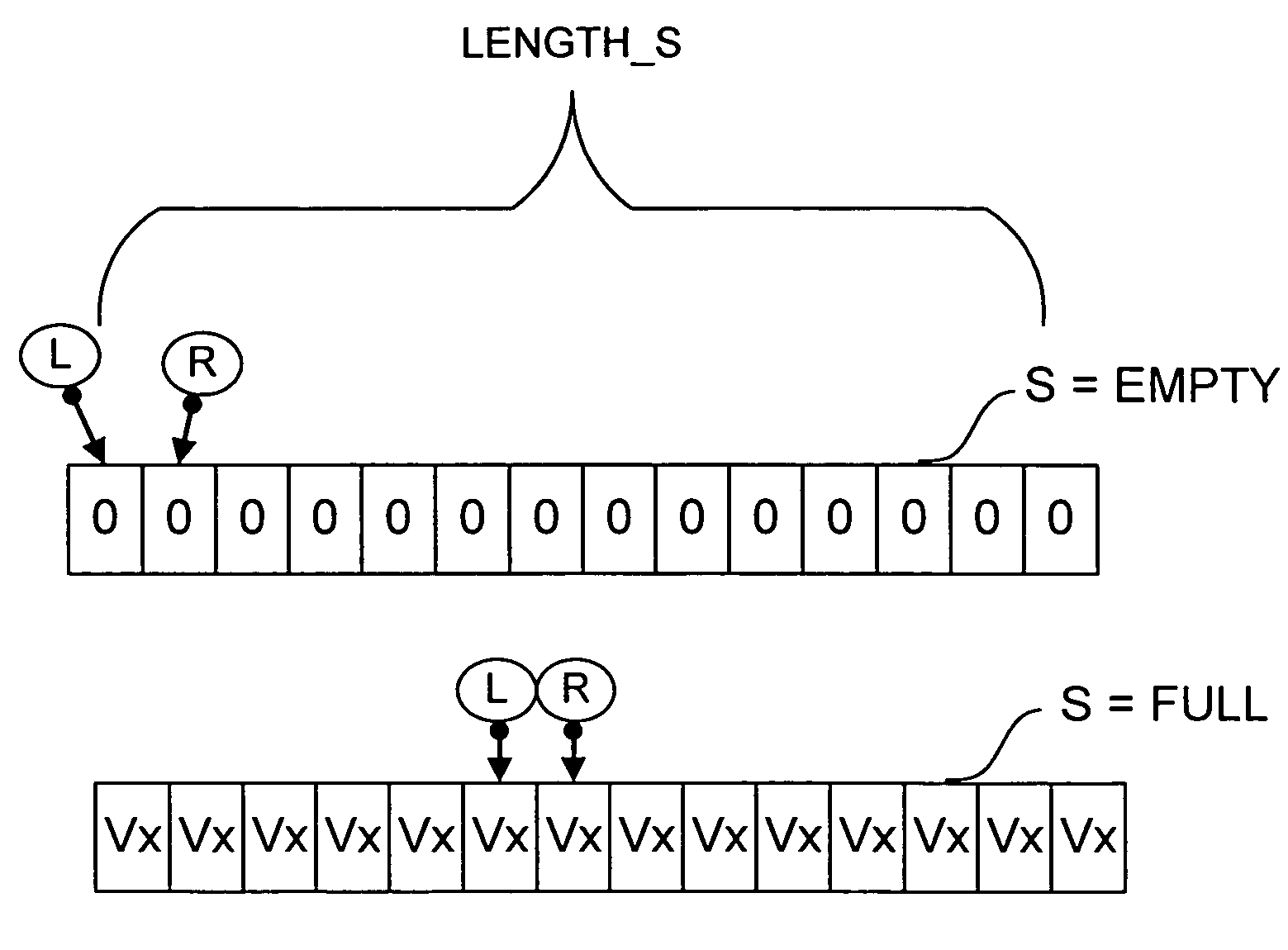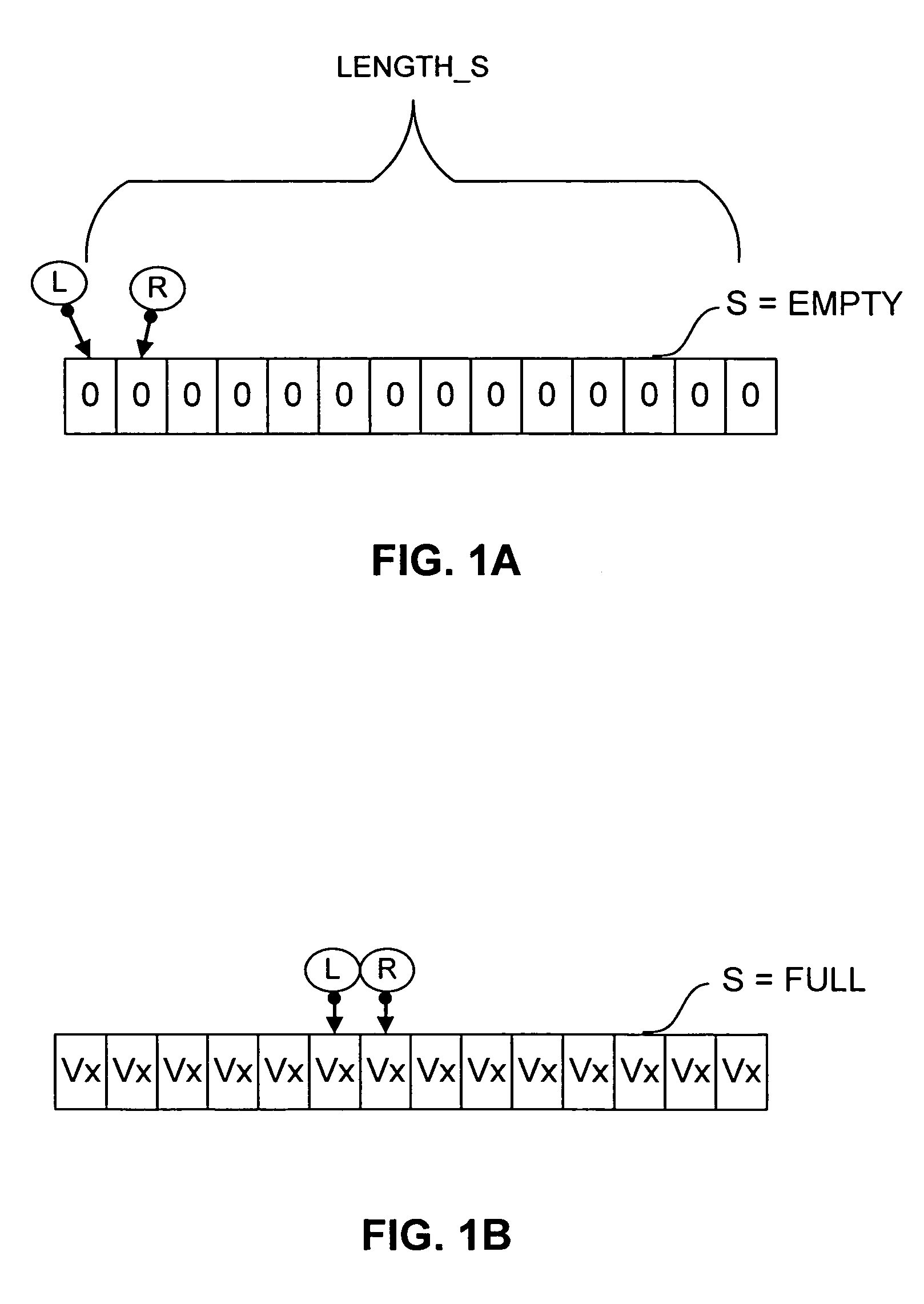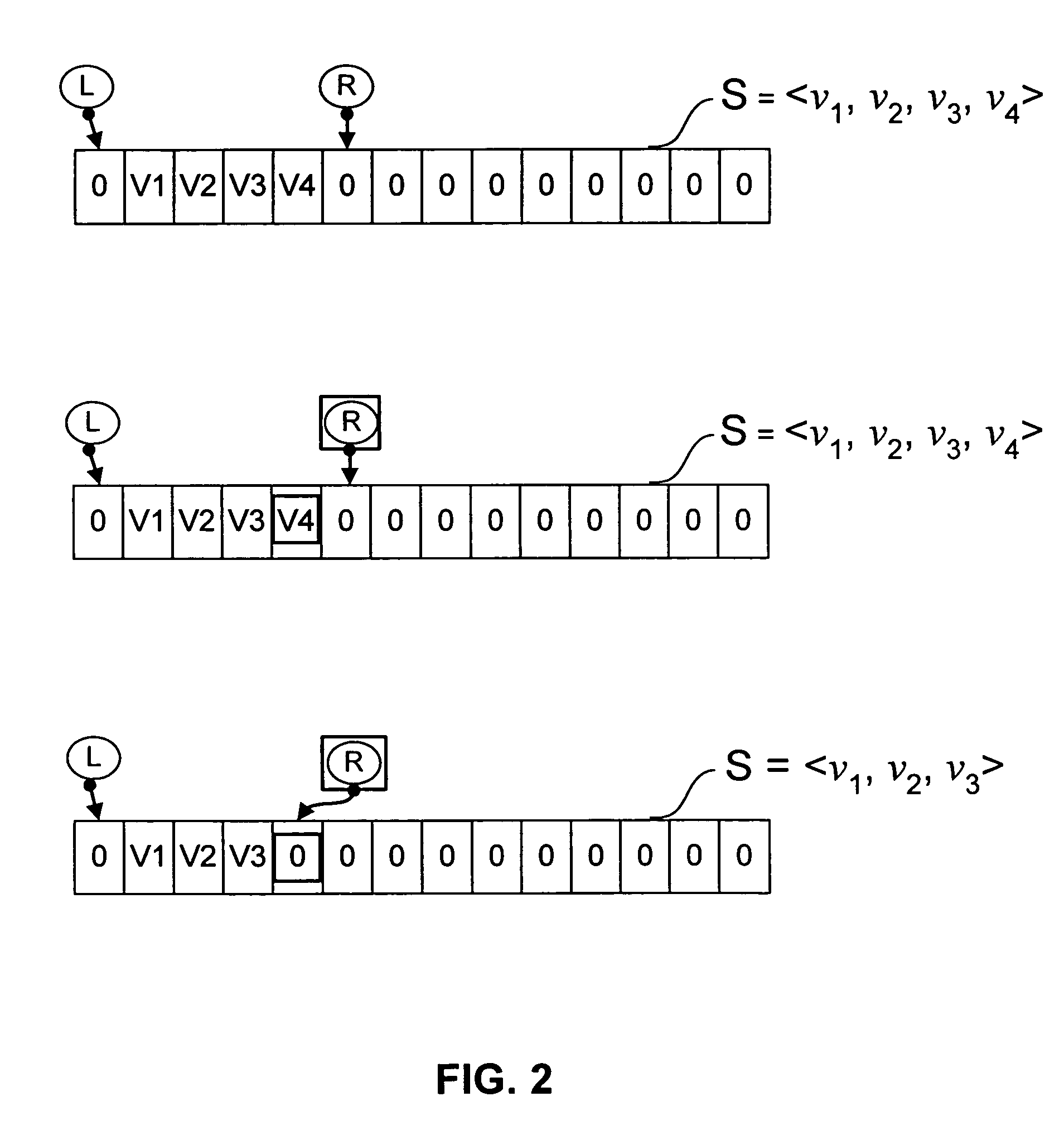Maintaining a double-ended queue as a linked-list with sentinel nodes and delete flags with concurrent non-blocking insert and remove operations using a double compare-and-swap primitive
a double-ended queue and linked-list technology, applied in the direction of interprogram communication, data conversion, multi-programming arrangements, etc., can solve the problems of limiting overall concurrency, not being expressive enough to support the design of efficient non-blocking algorithms, and not being able to implement synchronization operations on single memory locations
- Summary
- Abstract
- Description
- Claims
- Application Information
AI Technical Summary
Benefits of technology
Problems solved by technology
Method used
Image
Examples
Embodiment Construction
)
[0026]The description that follows presents a set of techniques, objects, functional sequences and data structures associated with concurrent shared object implementations employing double compare-and-swap (DCAS) operations in accordance with an exemplary embodiment of the present invention. An exemplary non-blocking, linearizable concurrent double-ended queue (deque) implementation is illustrative. A deque is a good exemplary concurrent shared object implementation, in that it involves all the intricacies of LIFO-stacks and FIFO-queues, with the added complexity of handling operations originating at both of the deque's ends. Accordingly, techniques, objects, functional sequences and data structures presented in the context of a concurrent deque implementation will be understood by persons of ordinary skill in the art to describe a superset of support and functionality suitable for less challenging concurrent shared object implementations, such as LIFO-stacks, FIFO-queues or concur...
PUM
 Login to View More
Login to View More Abstract
Description
Claims
Application Information
 Login to View More
Login to View More - R&D
- Intellectual Property
- Life Sciences
- Materials
- Tech Scout
- Unparalleled Data Quality
- Higher Quality Content
- 60% Fewer Hallucinations
Browse by: Latest US Patents, China's latest patents, Technical Efficacy Thesaurus, Application Domain, Technology Topic, Popular Technical Reports.
© 2025 PatSnap. All rights reserved.Legal|Privacy policy|Modern Slavery Act Transparency Statement|Sitemap|About US| Contact US: help@patsnap.com



